I'm trying to set dynamic row height in TableView. But unfortunately is not working.
The only thing is working is to set the heightForRowAt indexPath to a constant number.
func tableView(_ tableView: UITableView, heightForRowAt indexPath: IndexPath) -> CGFloat {
return 470 //or any other number
}
If I delete this function, or try to set it to automatic the cell will not show at all. Something like this:
func tableView(_ tableView: UITableView, heightForRowAt indexPath: IndexPath) -> CGFloat {
return UITableView.automaticDimension
}
I also tried to use:
self.tableView.estimatedRowHeight = UITableView.automaticDimension //Tried even with a number
self.tableView.rowHeight = UITableView.automaticDimension
But seems nothing to work besides using a constant height in heightForRowAt indexPath function. Which is not what I want, I want cell to be expanded based on content inside the cell.
I also tried to set height in heightForRowAt indexPath function to automatic but set a fixed height on constraints in the content of the cell xib file, still same (I did just to see what happens). So seems, something is wrong around this function.
Note:
My TableView and UITableViewCell are divided in a storyboard and a xib files.

